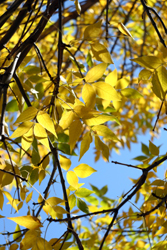The common ash shows its strength
For a hard wood, the growth rate of the common ash, F.excelsior is very rapid. Ironically, rapid growth and fast colonisation have lent this tree the 'weed' status in some situations where it is an unwelcome fast-growing visitor. However, members of the European project consortium RAP (Realising Ash's potential) have researched to help exploit the valuable traits that the ash offers to growers and the wood industry. As part of the drive to promote ash, scientists based in Dublin from the Irish agriculture and food development authority, Teagasc, have investigated the biochemistry of bud flushing. One of the inherent problems of ash growing is necrosis of apical buds in late Spring frosts. This then induces forking, or division of the stem. Needless to say, forking greatly reduces wood yield and quality. The time of flushing and growth of buds is a highly heritable trait. Breeding for earlier flushing is therefore very achievable as long as appropriate genetic markers can be selected. To identify potential molecular targets, fourteen different oxidative products associated with different stages in bud development were assayed. A second string to the tests confirmed the concentrations of these possible markers in provenances (from four different geographic areas) with known differences in flushing time. Five markers showed significant differences between late and early flushing provenances. Of these, elevated concentrations of mannitol, sucrose and trehalose could be usefully incorporated into breeding programmes as these molecules play an important role in bud growth differentiation. Further research and utilisation of selection tools at the tree breeding stage can lead to a more competitive timber market. Furthermore, at a time when renewable crops and forestation are becoming more desirable in a setting of environmental crisis, the ash could rise to its full potential.







